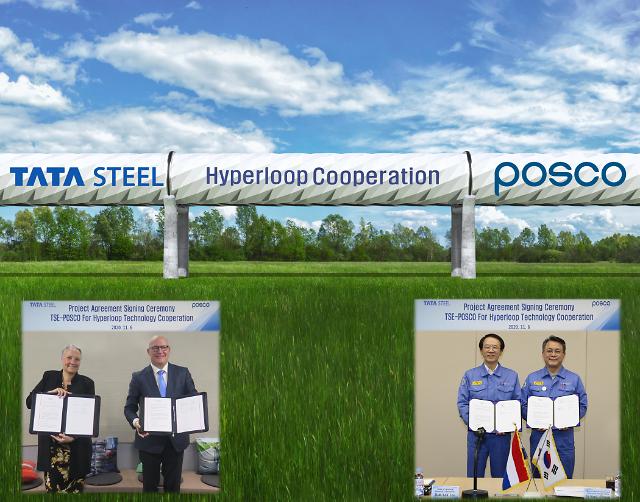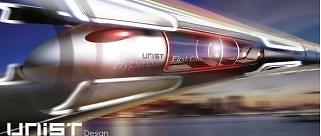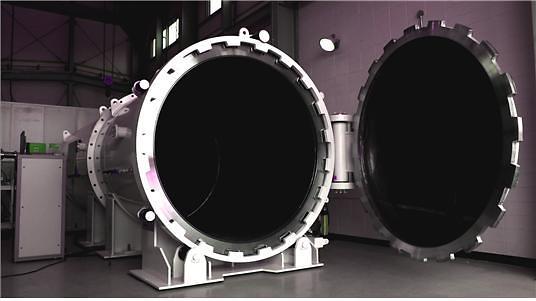
[Courtesy of POSCO]
Reduced-pressure tubes in which pressurized capsules ride on an air cushion driven by linear induction motors and air compressors are essential in the development of hyperloop technology. The key to commercialization is to ensure the straightness and stability of tubes. Materials used for hyperloop must have airtightness, processability and economic feasibility.
POSCO and Tata Steel Europe (TSE) have agreed to present a steel tube with a diameter of about 3.5 meters and develop customized steel materials and innovative tube designs. They would participate in hyperloop projects in Europe and other countries together and expand cooperation with companies related to hyperloop.
"POSCO has worked on designing and optimizing various types of steel tubes and structures related to hyperloop for more than a decade, and will contribute to the practical use of hyperloop, an eco-friendly means of transportation, by developing optimal steel and structural solutions," POSCO's Institute of Technology head Lee Deok-rak said in a statement released on November 9.
South Korean researchers have jumped into the development of hyperloop technology. In 2018, the state-run Korea Railroad Research Institute unveiled the prototype of a hyperloop vacuum tube that keeps airtightness by lowering its inside to less than 1/1,000 atmospheres to minimize air resistance of an encapsulated vehicle.
In 2013, Elon Reeve Musk, a South African-born Canadian-American business magnate who founded the Space Exploration Technologies Corporation (SpaceX), envisioned a system consisting of a solar-powered tube and levitating pods that could theoretically shoot passengers between cities at speeds close to the speed of sound.
A preliminary design document included a notional route running from Los Angeles to the San Francisco Bay. The preliminary analysis indicated that such a route might obtain an expected journey time of 35 minutes, meaning that passengers would traverse the 500 kilometers (350-mile) route at a top speed of 1,200 km per hour (760 mph).
Copyright ⓒ Aju Press All rights reserved.



View more comments